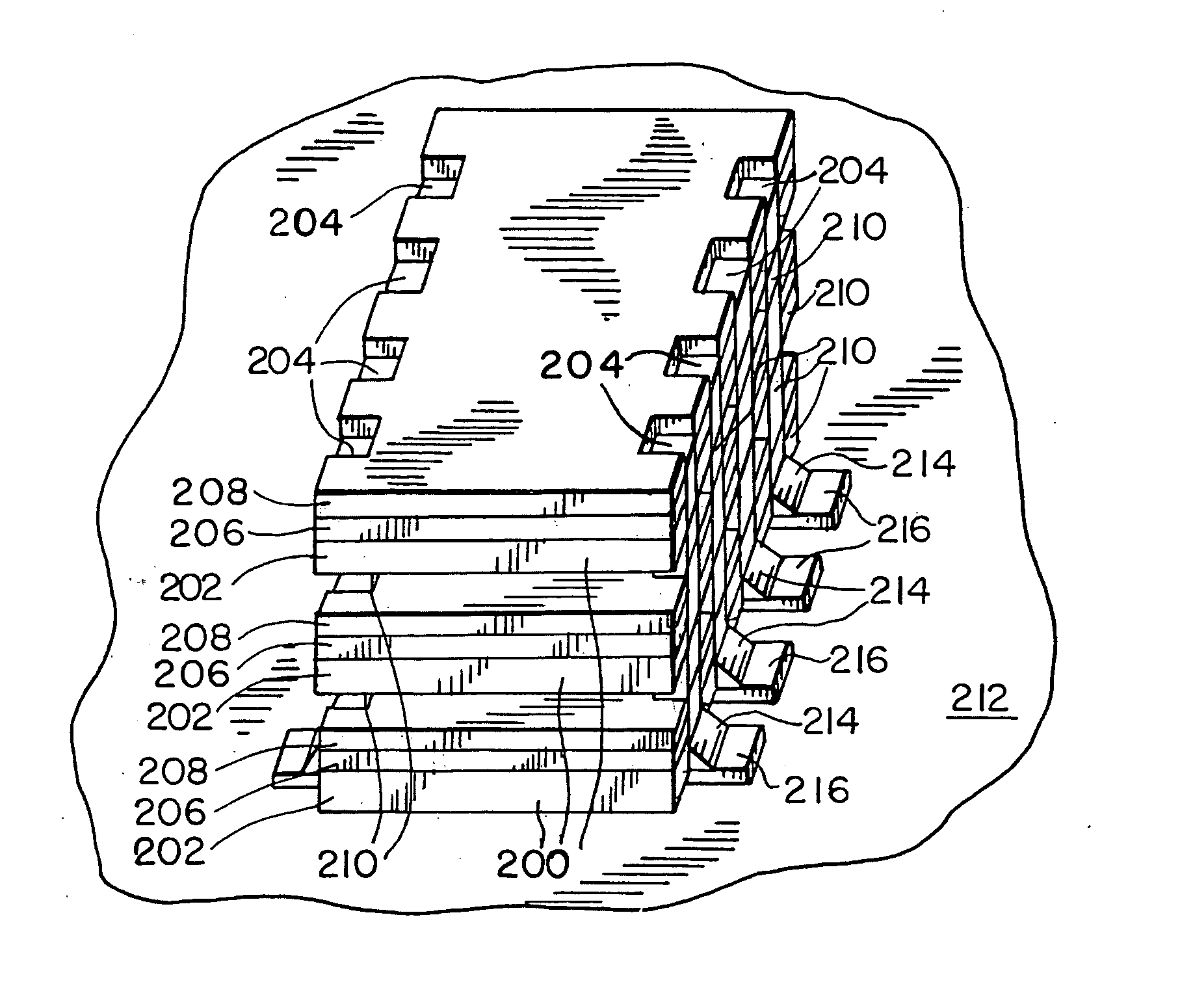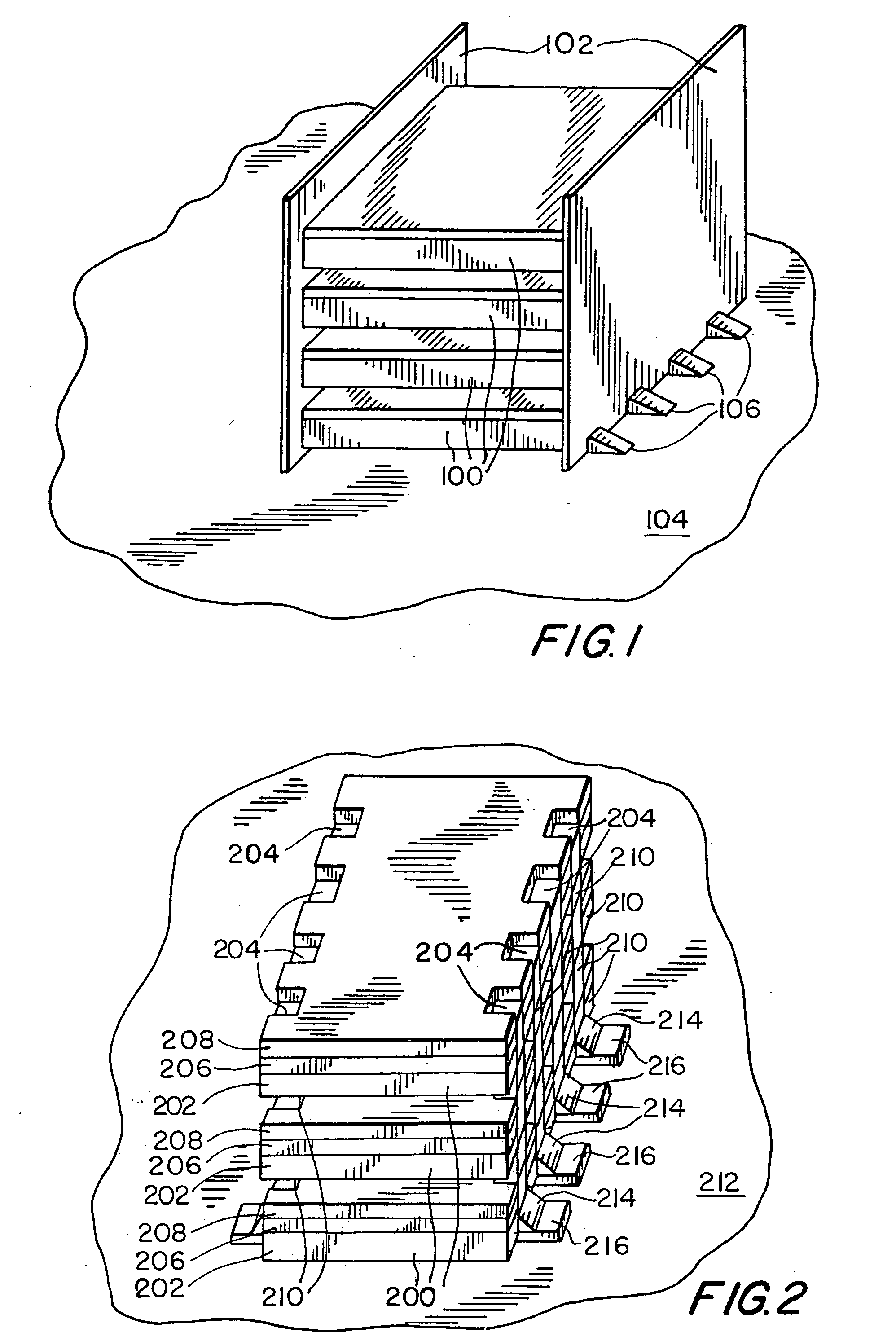Castellation wafer level packaging of integrated circuit chips
a technology of castellation wafers and integrated circuit chips, which is applied in the direction of electrical equipment, semiconductor devices, semiconductor/solid-state device details, etc., can solve the problems of many steps required for etching and connecting, many steps required for depositing layers of materials for conduction and insulation, and the known techniques are difficult to achieve. , to achieve the effect of reliable electrical characteristics of trace lines
- Summary
- Abstract
- Description
- Claims
- Application Information
AI Technical Summary
Benefits of technology
Problems solved by technology
Method used
Image
Examples
Embodiment Construction
[0065]FIGS. 1 and 2 illustrate preferred packages fabricated in accordance with the invention. In the embodiment shown in FIG. 1, packages 100 are stacked on top of one another. Contacts at the edge of the packages 100 (not shown) are soldered to printed circuit boards (PCB) 102. The contacts are coupled to the active circuit areas of integrated circuit chips in packages 100. Printed on PCBs 102 are conductors (not shown) coupling the respective contacts of each package 100. The contacts of packages 100 are also coupled to, for example, motherboard 104 by solder 106 which is coupled to the conductors printed on PCBs 102.
[0066] In the embodiment shown in FIG. 2, packages 200 are also stacked on top of one another. Each package 200 includes an integrated circuit chip (not shown) encapsulated by an encapsulant 202. Encapsulant 202 holds contacts 204 in place. Contacts 204 are coupled to the active circuit areas of the integrated circuit chip by conductors. Passivation interlayers 206 ...
PUM
 Login to View More
Login to View More Abstract
Description
Claims
Application Information
 Login to View More
Login to View More - R&D
- Intellectual Property
- Life Sciences
- Materials
- Tech Scout
- Unparalleled Data Quality
- Higher Quality Content
- 60% Fewer Hallucinations
Browse by: Latest US Patents, China's latest patents, Technical Efficacy Thesaurus, Application Domain, Technology Topic, Popular Technical Reports.
© 2025 PatSnap. All rights reserved.Legal|Privacy policy|Modern Slavery Act Transparency Statement|Sitemap|About US| Contact US: help@patsnap.com



